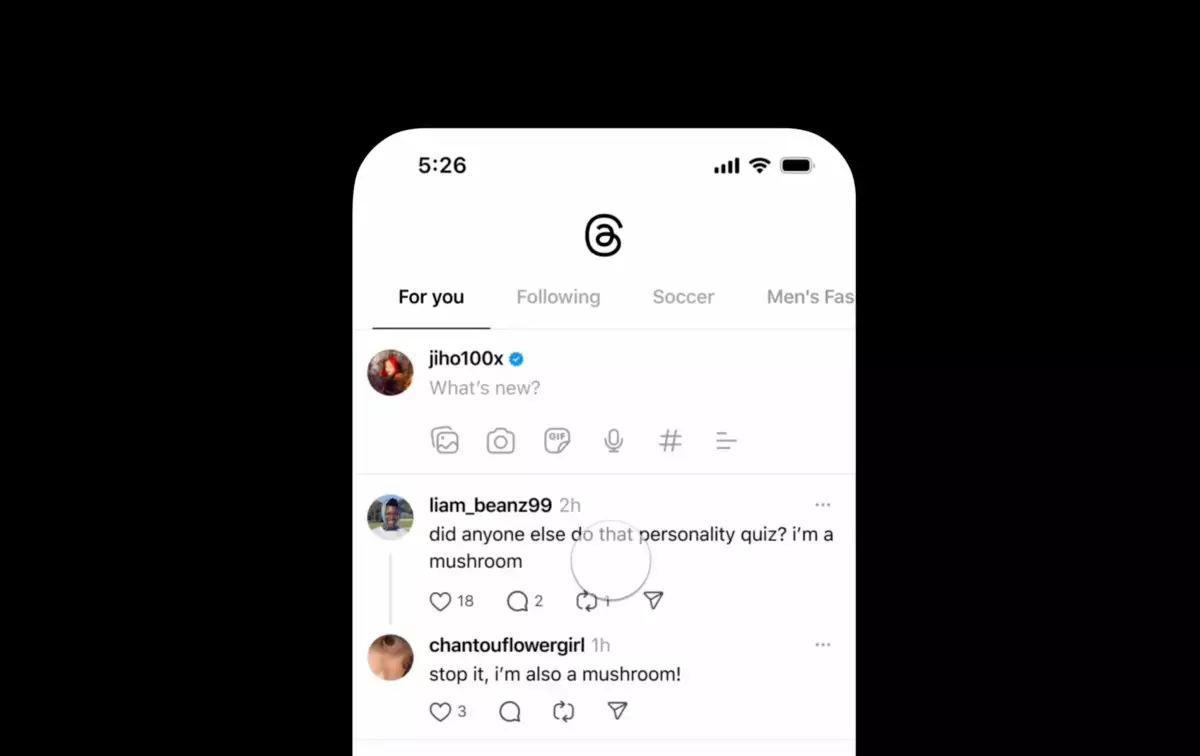In the dynamic realm of social media, where user preferences and engagement can shift with astonishing speed, Mark Zuckerberg’s Meta has rolled out a noteworthy initiative: custom feeds for its platform, Threads. This move comes in response to the swell of interest in competing platforms like Bluesky, which has attracted a notable user base by offering personalized algorithms and community-centric features. The digital arena is becoming not only crowded but also increasingly complex, as users navigate their preferences for political dialogue, community engagement, and information consumption.
Bluesky’s emergence as a vibrant alternative to the social media giant X (formerly Twitter) has become one of the major talking points in the tech world. Its approach emphasizes user control through customizable feeds, allowing individuals to dictate their own narratives and moderation, which is particularly appealing in a time marked by increasing polarization. Following the U.S. presidential election, Bluesky’s user base surged dramatically, indicating a clear demand for platforms that align more closely with specific political perspectives or community norms. The fact that Bluesky witnessed a meteoric rise from 700,000 new user registrations in a week to a staggering million in just one day points to the urgent need within the digital community for spaces that feel more tailored and inclusive.
Acknowledging the need for adaptability, Threads aims to climb the competitive ladder by facilitating greater user customization within its platform. The introduction of custom feeds is a significant step. Previously, Threads relied heavily on a default “For You” algorithm that curtail user autonomy, delivering content according to its computational insights rather than user preferences. This clunky engagement model caused disconnection and frustration among users—especially on pivotal evenings like election night when relevancy in updates was crucial. Threads’ move to introduce a feature allowing for personal feed creation can be seen as an attempt to re-engage disenchanted users while first assessing the competitive threat posed by Bluesky.
However, the implementation of custom feeds has not been universally well-received. While the introduction adds a layer of functionality, the execution leaves something to be desired. Users must delve into a multi-step process to set up their custom feeds, which may prove cumbersome compared to the intuitive interface of rival platforms. The ability to tailor feeds by following designated topics or profiles might attract users seeking specificity, but the obscured placement of this feature within the platform has drawn ire from individuals who have continuously requested more seamless access to varied content.
Challenges Ahead
As Threads attempts to solidify its foothold in the market, it faces the daunting challenge of reversing user migration to competitors like Bluesky. Despite boasting over 275 million monthly active users—an impressive statistic, no doubt—Threads must grapple with retaining its user base amid rising discontent about the usability and functionality of its interface. The introduction of new features is a stepping stone, but Meta must also ensure that they enhance rather than complicate the user experience for Threads to remain a viable alternative in an increasingly fragmented domain.
The future of social media platforms appears dictated by whether they can adapt rapidly to ever-evolving user needs. Customization and personalization have become non-negotiable demands. As social dynamics change, with populations migrating towards platforms that resonate with their values and political leanings, Meta must stay attuned to these currents. In crafting a user experience that feels personal yet intuitive, Threads has the potential to reclaim its strength against emergent challengers—yet a singular focus on linear functionality may not suffice.
The unfolding narrative within social media transcends mere competition. It’s a reflection of wider societal trends, with users seeking not only to connect but to engage meaningfully within their preferred contexts. The outcome of this battle will likely shape the landscape of digital interaction for years to come.

